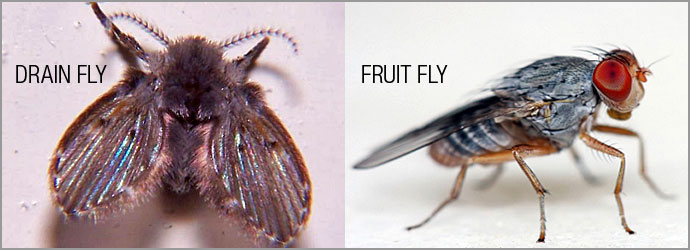 |
|
 |
Corbett Pest Identification
FAQ's | Quality Control | Licenses & Certifications | Pesticide Information | Pest Identification
Bedbugs | Carpet Beetles | Pantry & Stored Food Pests | Fleas | Ants & Termites
Flies | Cockroaches | Lice | Rats & Mice | Stink Bugs
FILTH BREEDING FLIES

- All filth flies have an egg, larva (maggot), pupa, and adult stage in life cycle.
- Are scavengers in nature and capable of transmitting diseases to man.
– Houseflies
– Flesh flies
– Blow flies
– Bottle flies
– Filter flies
– Soldier flies
– Vinegar (fruit) flies
- In warmer months can produce a generation in less than 2 weeks.
– Eggs are laid in any type of warm organic material.
– Eggs hatch within 24 hours
– In 4-6 days the larvae migrate to drier portions of breeding medium and pupate.
– Pupal stage varies but is about 3 days.
– House fly can go through entire life cycle in 6-10 days, can live an average of 30 days.
- Stable Fly or Dog Fly
– Primarily attack animals but can bite man
– Can fly up to 70 miles from breeding sites
- Flesh Flies
– Scavenger species feeds on carrion or meat scraps in garbage
– Can breed in dead rodents and birds in attics or wall voids of houses.
- Blow Flies and Bottle Flies
– Can breed in dead rodents and birds in attics or wall voids of houses.
– Garbage cans have been known to produce 30,000 blow flies in one week.
- Hump-Backed Flies
– Breed in decaying vegetation, animal debris, garbage, an in ant and termite nests.
- Filter Flies or Moth Flies
– Breed in decomposing organic matter such as plant litter, garbage, sewage, around kitchen or bathroom sinks and water traps.
- Vinegar (Fruit) Fly
– Breed in fruit, dirty garbage containers, or slime in drains feeding on yeasts.
– Attracted to fruit, vegetables and soda bottles and cans.
- Sanitation is best method of control
– Do Not let garbage accumulate, make sure garbage cans have sound bottoms and tight fitting lids.
– Good fitting screens on windows and doors prevent flies from entering homes.
|
 |




